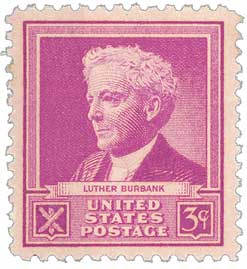
# 4731-34 - 2013 33c Apples coil stamps
U.S. # 4731-34
2013 33¢ Apples
Set of 4 Coils
Puritans brought the apple tree to North America, where William Blaxton first harvested what was called “winter bananas” or “melt-in-the-mouths.” Known today as apples, the fruit is one of the most complex examples of Mother Nature’s work. Scientists recently discovered the Golden Delicious apple has 57,000 genes, the highest of any plant and nearly twice that of humans.
Mankind has played a role in developing more than 7,500 different apple varieties, something nature would not have done on its own. Apple trees are difficult to start from seed, most are not self-pollinators, and those that survive usually produce fruit that is not edible. Instead, growers rely on propagation, during which a branch or bud from a desired variety is grafted onto rootstock. The tree that grows produces fruit similar to the grafted variety.
Propagation allows for two promising scenarios. Modern varieties are developed through genetic mutation before grafting. And the chance discovery of heirloom trees in old orchards means our ancestors’ favorites can be resurrected through grafting. But whether we bite into the same variety people of the Stone Age enjoyed or thrill to a newly created sensation, we’ll be savoring a tasty and healthy treat.
Artist John Burgoyne created the apple artwork for these stamps using watercolor with pen and ink before adding finishing touches with computer software.
Value: 33¢ domestic postcard rate
Issued: January 17, 2013
First Day City: Yakima, WA
Type of Stamp: Definitive
Printed by: Banknote Corporation of America for Sennett Security Products
Method: Offset printing in coils of 100
Perforation: Serpentine Die Cut 11
Self-Adhesive
Quantity Printed: 600,000,000 stamps
Apples have been pictured on U.S. stamps since 1966, when one was issued to honor Johnny Appleseed (U.S. #1317). Apples were also pictured on a pair of 2001 definitives (U.S. #3491 and #3193), the 2002 Greetings from Washington stamps (U.S. #3607 and #3742) and the 2012 Heart Health stamp (U.S. #4625).
Birth Of Luther Burbank
The thirteenth of eighteen children, Burbank spent his childhood on his family farm enjoying his mother’s large garden. He only received a high school education but would go on to become a pioneer in agricultural science.
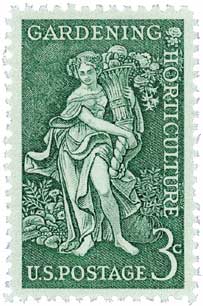
Following his father’s death, Burbank used his inheritance to buy 17 acres of land near Lundenburg. There he developed the Burbank potato and sold the rights to it for $150. He then used that money to travel to Santa Rosa, California, in 1875. The Burbank potato was later renamed the Russet Burbank potato and became one of the most widely used potatoes for food processing, such as for French fries.
After moving to California, Burbank bought four acres of land and set up a greenhouse, nursery, and experimental fields. He used these fields to experiment with crossbreeding after reading Charles Darwin’s The Variation of Animals and Plants under Domestication. He later expanded his plot by another 18 acres.
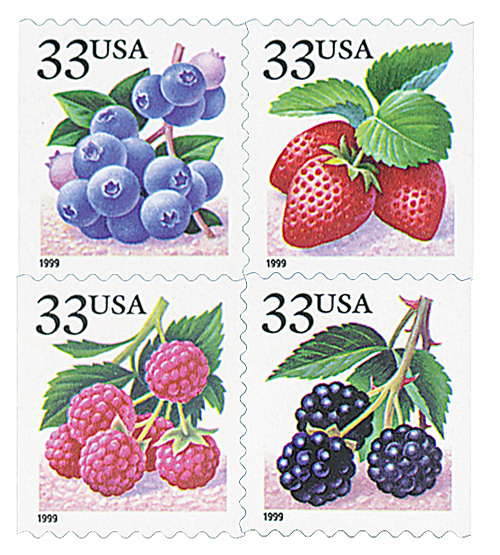
In the coming years, Burbank began producing popular plant catalogs, most notably his 1893 “New Creations in Fruits and Flowers.” Around this same time, Burbank met Clarence McDowell Stark, of Stark Bro’s Nurseries & Orchards. At the time, Burbank was running a small seed and nursery business to make ends meet, distracting him from his brilliant work in hybridizing. Stark believed he was wasting his time with the nursery business so he offered him $9,000 for three varieties of fruits.
Burbank also had fans, The Luther Burbank Society, which worked to publish his discoveries and manage his business dealings to help him out financially. Additionally, from 1904 through 1909, the Carnegie Institution gave Burbank several grants to fund his research. Andrew Carnegie was a strong supporter of Burbank.

Over the course of his life, Burbank developed hundreds of new varieties of fruits, vegetables, grasses, and flowers. Some of the most notable include the Shasta daisy, the fire poppy, the July Elberta peach, the Santa Rosa plum, the Flaming Gold nectarine, the Wickson plum, the freestone peach, and the white blackberry.
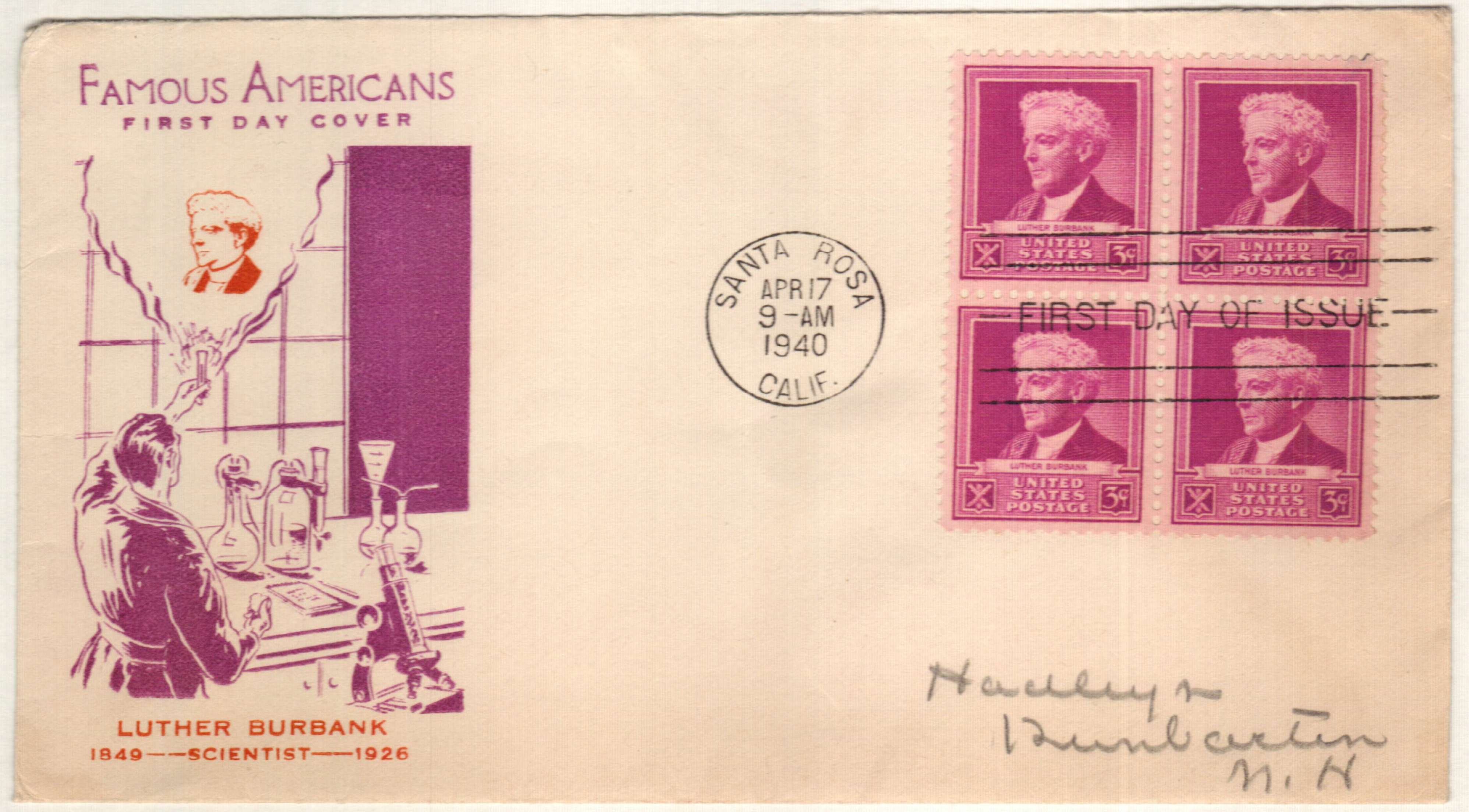
After several weeks of health issues, Burbank died on April 11, 1926. He was buried in an unmarked grave at the Luther Burbank Home and Gardens in Santa Rosa, California. Burbank left everything to his wife, who then continued the partnership with the Stark brothers. After Burbank’s death, they discovered hundreds of fruit and flower varieties that he’d developed but never marketed and began to sell them in their catalog.
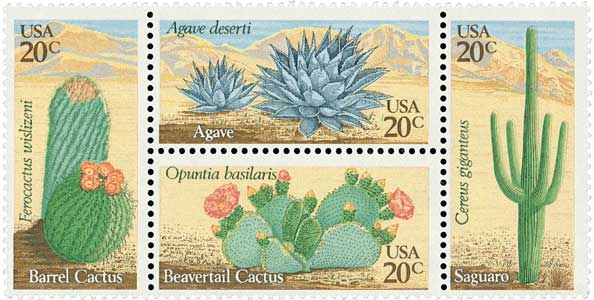
Burbank wasn’t a traditionally trained scientist and didn’t keep detailed notes of his experiments. He believed his time was better spent in the garden. He also may not have wanted to share too much information because there was no way to protect his discoveries from being duplicated by someone else. However, four years after his death Congress passed the 1930 Plant Patent Act, which allowed for the patenting of new plant varieties. Thomas Edison testified in favor of the bill claiming that it would “give us many Burbanks.” Once it was passed, Burbank was posthumously awarded 16 patents.
Click here to read more about some of Burbank’s plants.
U.S. # 4731-34
2013 33¢ Apples
Set of 4 Coils
Puritans brought the apple tree to North America, where William Blaxton first harvested what was called “winter bananas” or “melt-in-the-mouths.” Known today as apples, the fruit is one of the most complex examples of Mother Nature’s work. Scientists recently discovered the Golden Delicious apple has 57,000 genes, the highest of any plant and nearly twice that of humans.
Mankind has played a role in developing more than 7,500 different apple varieties, something nature would not have done on its own. Apple trees are difficult to start from seed, most are not self-pollinators, and those that survive usually produce fruit that is not edible. Instead, growers rely on propagation, during which a branch or bud from a desired variety is grafted onto rootstock. The tree that grows produces fruit similar to the grafted variety.
Propagation allows for two promising scenarios. Modern varieties are developed through genetic mutation before grafting. And the chance discovery of heirloom trees in old orchards means our ancestors’ favorites can be resurrected through grafting. But whether we bite into the same variety people of the Stone Age enjoyed or thrill to a newly created sensation, we’ll be savoring a tasty and healthy treat.
Artist John Burgoyne created the apple artwork for these stamps using watercolor with pen and ink before adding finishing touches with computer software.
Value: 33¢ domestic postcard rate
Issued: January 17, 2013
First Day City: Yakima, WA
Type of Stamp: Definitive
Printed by: Banknote Corporation of America for Sennett Security Products
Method: Offset printing in coils of 100
Perforation: Serpentine Die Cut 11
Self-Adhesive
Quantity Printed: 600,000,000 stamps
Apples have been pictured on U.S. stamps since 1966, when one was issued to honor Johnny Appleseed (U.S. #1317). Apples were also pictured on a pair of 2001 definitives (U.S. #3491 and #3193), the 2002 Greetings from Washington stamps (U.S. #3607 and #3742) and the 2012 Heart Health stamp (U.S. #4625).
Birth Of Luther Burbank
The thirteenth of eighteen children, Burbank spent his childhood on his family farm enjoying his mother’s large garden. He only received a high school education but would go on to become a pioneer in agricultural science.

Following his father’s death, Burbank used his inheritance to buy 17 acres of land near Lundenburg. There he developed the Burbank potato and sold the rights to it for $150. He then used that money to travel to Santa Rosa, California, in 1875. The Burbank potato was later renamed the Russet Burbank potato and became one of the most widely used potatoes for food processing, such as for French fries.
After moving to California, Burbank bought four acres of land and set up a greenhouse, nursery, and experimental fields. He used these fields to experiment with crossbreeding after reading Charles Darwin’s The Variation of Animals and Plants under Domestication. He later expanded his plot by another 18 acres.

In the coming years, Burbank began producing popular plant catalogs, most notably his 1893 “New Creations in Fruits and Flowers.” Around this same time, Burbank met Clarence McDowell Stark, of Stark Bro’s Nurseries & Orchards. At the time, Burbank was running a small seed and nursery business to make ends meet, distracting him from his brilliant work in hybridizing. Stark believed he was wasting his time with the nursery business so he offered him $9,000 for three varieties of fruits.
Burbank also had fans, The Luther Burbank Society, which worked to publish his discoveries and manage his business dealings to help him out financially. Additionally, from 1904 through 1909, the Carnegie Institution gave Burbank several grants to fund his research. Andrew Carnegie was a strong supporter of Burbank.

Over the course of his life, Burbank developed hundreds of new varieties of fruits, vegetables, grasses, and flowers. Some of the most notable include the Shasta daisy, the fire poppy, the July Elberta peach, the Santa Rosa plum, the Flaming Gold nectarine, the Wickson plum, the freestone peach, and the white blackberry.

After several weeks of health issues, Burbank died on April 11, 1926. He was buried in an unmarked grave at the Luther Burbank Home and Gardens in Santa Rosa, California. Burbank left everything to his wife, who then continued the partnership with the Stark brothers. After Burbank’s death, they discovered hundreds of fruit and flower varieties that he’d developed but never marketed and began to sell them in their catalog.

Burbank wasn’t a traditionally trained scientist and didn’t keep detailed notes of his experiments. He believed his time was better spent in the garden. He also may not have wanted to share too much information because there was no way to protect his discoveries from being duplicated by someone else. However, four years after his death Congress passed the 1930 Plant Patent Act, which allowed for the patenting of new plant varieties. Thomas Edison testified in favor of the bill claiming that it would “give us many Burbanks.” Once it was passed, Burbank was posthumously awarded 16 patents.
Click here to read more about some of Burbank’s plants.








